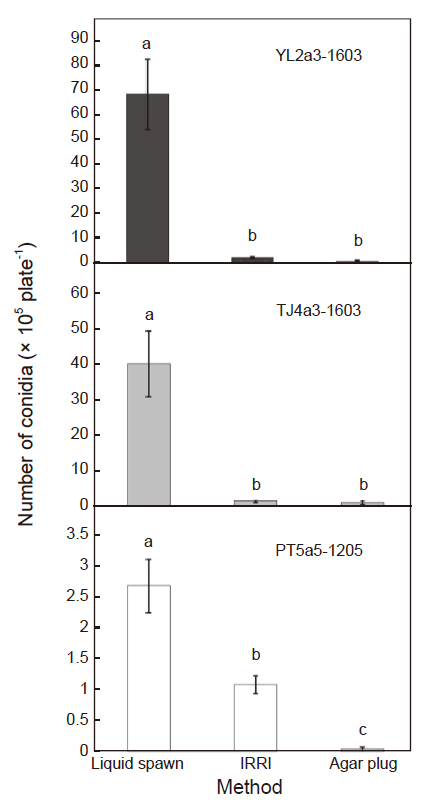All issues

Author:Yi-Nian Chen, Dong-Hong Wu, Mei-Chun Chen, and Pei-Chen Chen*
Abstract:
It requires a large number of conidia not only for pathogenic races identification of Pyricularia oryzae (the causal agent of rice blast) but also for disease resistance assessment of rice varieties against the pathogen. For stable test result, the same age of conidiospores are also essential for these pathogenicity tests. A mycelial homogenate method (called “liquid spawn method”) modified from the IRRI (International Rice Research Institute) protocol was used to induce simultaneous conidia production of rice blast fungus. The processes are: (1) 4-d-old colony of P. oryzae isolate was cut into numerous pieces and cultured in prune broth for 4 d; (2) homogenizing the whole broth, dispersing the liquid spawn evenly on oat flour agar (OFA) medium plate, air-drying the excess water on the plate, and then culturing the medium at room temperature with natural light illumination for 4 d for conidia production. By use of this method, the conidia yield of several tested isolates of P. oryzae were much higher (2−31 folds) than those with IRRI protocol. In another test, 14 P. oryzae isolates which had very poor conidia yields with regular methods produced significantly higher number of conidia by the method. The results showed that the liquid spawn method could be used for simultaneous and massive sporulation of P. oryzae.
Key words:Pyricularia oryzae, Sporulation, Conidia, Liquid spawn, Oat flour agar
Download:![]() PDF Links
PDF Links
- 1. Development of Tractor-Mounted Seedling Transplanter for Sweet Potato
- 2. Synergistic Effect of Additional Gas on the Toxicity of Phosphine to Sitophilus oryzae and Sitophilus zeamais (Coleoptera: Dryophthoridae)
- 3. Effects of Temperature and Solar Radiation on Growth Traits and Plant Elements in Purple Leafy Sweet Potato
 Submit your manuscript
Submit your manuscript
 Guide for authors
Guide for authors